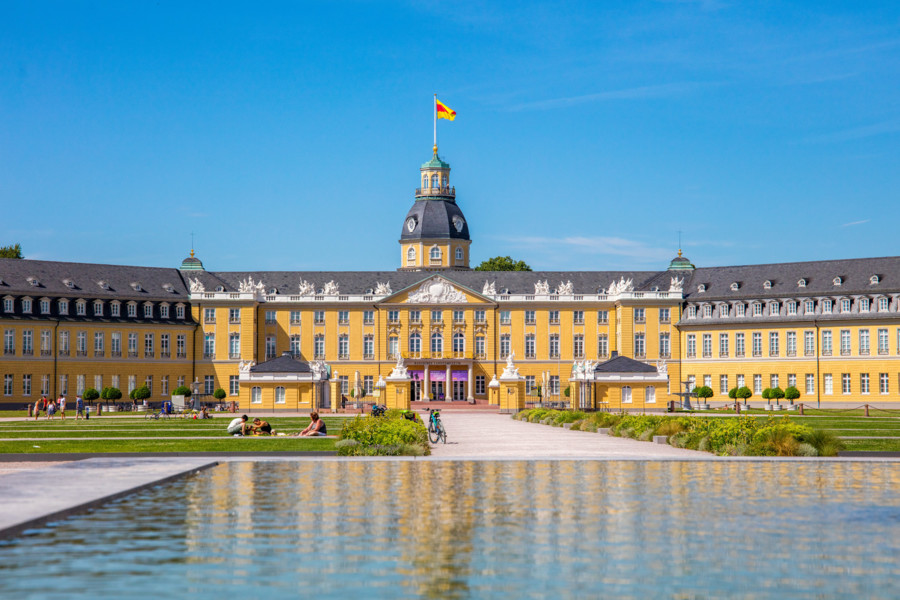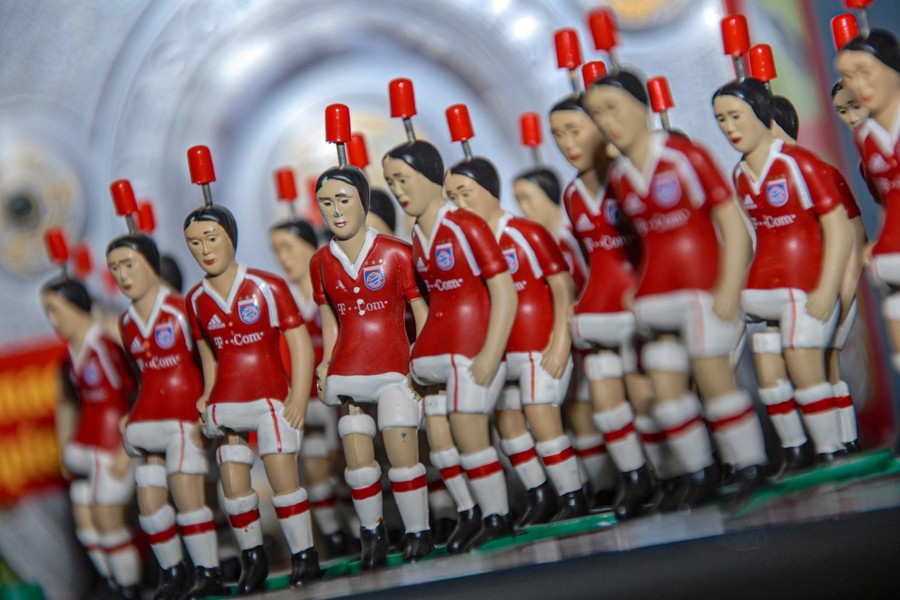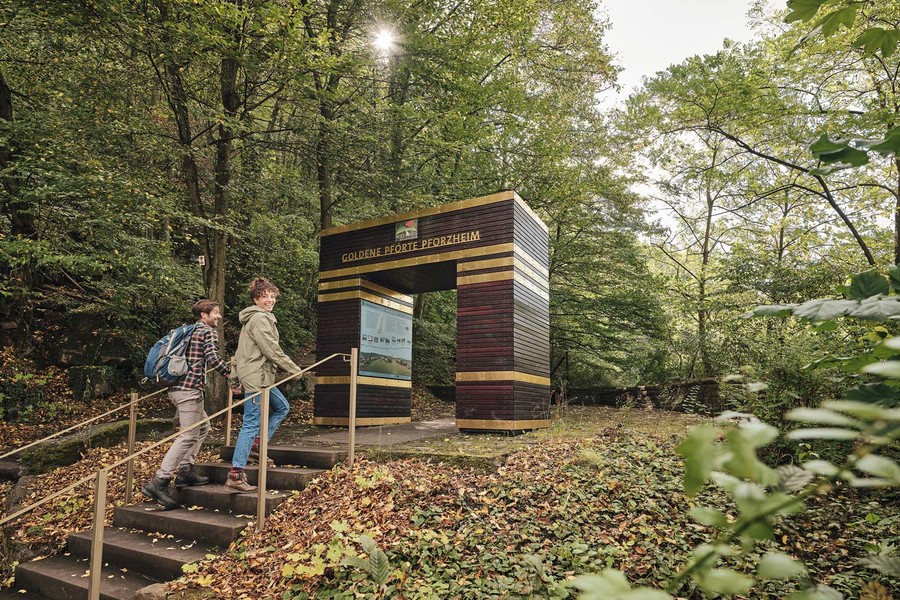Baden-Württemberg's Impact on the Development of Football
Football Inventions from Southwest Germany
© SMG, Foto: Martina Denker


BW Story - Hirsch & Greif
Football Knowledge That Amazes Even Experts
Who invented football? The English. Who improved it? The football pioneers from Southwest Germany. You will be amazed at the football inventions that have their origins in Baden-Württemberg. For example, red cards, goalkeeper gloves and penalty shoot-outs. People from Southwest Germany came up with all this and much more.
Baden-Württemberg has the highest number of patent applications in Germany. The cliché of inventive people in Southwest Germany is no coincidence. This is also evident in football. Take the national team coach, for example: almost half of the coaches of the German national team grew up in Baden-Württemberg. Exactly five out of twelve, namely Otto Nerz, Sepp Herberger, Jürgen Klinsmann, Jogi Löw and Hansi Flick. Many other successful football coaches have also started their careers in Baden-Württemberg. The state is considered the home of continuous improvement in the game. Because people love football – and simply can't stop themselves from coming up with good ideas.
 Germany's First Football Games
Germany's First Football Games
Germany's First Football Games
Anyone researching the roots of German football ends up in the Southwest of the country twice: in Stuttgart and Karlsruhe. Football was played in Cannstatt, near Stuttgart, as early as 1865. This is according to a note by William Cail, who later became treasurer of the English Rugby Union. He spent his youth in Cannstatt. His precise note, contained in a letter to a fellow Cannstatt sportsman, is still the oldest evidence of a football match in Germany. But what was being played in Cannstatt at the time? Football or rugby? The question is superfluous. Back then, football and rugby were one and the same. Both were simply called ‘football’.
Later, when the rules of the game were clearly defined, Karlsruhe became the centre of German football. This was mainly due to Walther Bensemann. The great German football pioneer founded the International Football Club there in 1889, which later became the ‘Karlsruher Kickers’. They played on the ‘Engländerplätzle’ (English Square) near Moltkestraße. Parts of the historic pitch can still be played on today.

Nowadays, someone like Bensemann would be called a "networker". He was involved in the founding of 15 football clubs in southern Germany. He was particularly active in his home town of Karlsruhe. There and elsewhere, he organised matches against international teams. These matches are considered the first international matches in German football history. Later, when the German Football Association (DFB) was founded, it became clear that the state of Baden was superior to other regions in sporting terms. Of the first seven German championship titles, three went to Baden. In 1907 to Freiburger FC, in 1909 to Phönix Karlsruhe and a year later to Karlsruher FV. By this time, Bensemann had already moved on. In 1920, he founded the sports magazine ‘Kicker’. It was first printed in Constance, then in Stuttgart. To this day, Walther Bensemann is regarded as the inventor of critical sport journalismus.
Tipp-Kick: Small Revolutions
Bensemann's groundbreaking achievements outshine everything else, but there were several other exciting football-related inventions in Southwest Germany. In 1924, a furniture manufacturer from Stuttgart sold his patent for small tin figurines with a movable foot. He tought it was worthless, but he was completely wrong. Edwin Mieg from Schwenningen bought the patent and turned the figurines into little footballers playing with a square ball. The Tipp-Kick game had been invented. Two years later, he exhibited it with great success at the Nuremberg Toy Fair. Tipp-Kick still exists today, almost unchanged. It is only truly original when it is made in Schwenningen. Tipp-Kick will celebrate its 100th anniversary during the 2024 European Championships.

Ingenuity was not limited to the game itself. As football became more popular and the game rougher, a referee from Stuttgart had a really good idea. Rudolf Kreitlein invented the yellow and red cards in the late 1960s. The inspiration came from a 1966 World Cup game that Kreitlein refereed. Due to communication problems, it took him a whole seven minutes to send off an Argentinian player. Kreitlein was annoyedand wanted a clearer signal to send off players. Something that would be understood around the world. Standing at a traffic light in London, he had a flash of genius. And so the yellow and red cards were invented. The yellow card made its debut at the 1970 World Cup in Mexico. The first referee to use a yellow card in a game? Kurt Tschenscher from Mannheim in Southwest Germany.
 On a Shopping Tour in Metzingen
On a Shopping Tour in Metzingen
On a Shopping Tour in Metzingen
Similar time, different place: Metzingen. As early as the 1970s, this small Swabian town, now famous for its outlet stores, the Outletcity Metzingen, was worth a visit for shopping. Footballers, especially goalkeepers, were also known to shop there. Together with German football legend Sepp Maier, glove manufacturer Gebhard Reusch from Metzingen had developed a special glove for goalkeepers. The innovation: latex on the inside. The idea was to make the ball stick better. Some experts believe that Sepp ‘the Cat’ Maier only allowed fewer goals than other goalkeepers because of his special gloves.

The Reinvention of Football
Today, you read the terms "back four", "ball orientation" and "shifting" in tactical analyses as a matter of course. When these terms were introduced by a southwest German coaching school in the 1980s, it seemed to some like the tactical reinvention of football. The coaching staff led by Helmut Groß, Ralf Rangnick and other experts from the Württemberg Football Association were in charge. Much was learnt from Dynamo Kyiv, the team that was a regular guest at the sports academy in Ostfildern-Ruit. The advantage of the Württemberg coaching school has since led to a third of all Bundesliga coaches coming from Southwest Germany.
 Decisive Inventions. Local Specialties
Decisive Inventions. Local Specialties
Decisive Inventions. Local Specialties
How is a European Championship final decided if the score is tied after extra time? By penalty shoot-out, of course. And who invented it? Bavaria say they did. A certain Karl Wald suggested the penalty shoot-out to the Bavarian Football Association in 1970. That may be true. But it doesn't explain why the Württemberg Football Association decided to end a cup match by a penalty shoot-out as early as 1967. It happened in the Jahnstadion in Ludwigsburg in a match between Ludwigsburg 07 and Normannia Gmünd.
Despite the modesty of the many football inventors from Southwest Germany, it has to be admitted that not every idea conquered the world. Take, for example, the ‘Schnürles’ game from Pforzheim, a type of football tennis that was invented as a game to train football skills. The ground looks like a tennis court, but much smaller. The football has to be played over a string into the opponent's field. The ball may only touch the ground once at a time. The ‘Schnürles’ game does not take its name from the string, called ‘Schnürle’ in Swabian, but from its inventor, Fritz Schnürle from Pforzheim. ‘Schnürles’ competitions are still held in and around Pforzheim today. Many of the city's outdoor swimming pools, such as in Dillweißenstein, have ‘Schnürles’ courts. Despite the undoubted ingenuity of the invention: Even almost a hundred years after Fritz Schnürle’s invention, his game hasn’t made it beyond the city boundaries of Pforzheim.

